Tadaaki Kuwayama’s artwork is the type that you look at and think, “What’s so great about this? I could have painted it.” But there was a time in the 1960s, when painting an entire 110cm x 110cm canvas in blue or beige paint, was mind-blowingly revolutionary. Born in Nagoya in 1932, Kuwayama was trained in traditional Japanese painting on silk. It wasn’t until he moved to New York in the late 1950s that he started experimenting with his signature minimalistic-style monochrome paintings outlined with aluminum strips. A selection of his works from this period, From the ‘60s Til Today (60年代至今日), are currently on view at Taipei’s Galerie Grand Siecle.
■ Galerie Grand Siecle (新苑藝術), 17, Alley 51, Ln 12, Bade Rd Sec 3, Taipei City (台北市八德路三段12巷51弄17號), tel: (02) 2578-5630. Open Tuesdays to Sundays from 1pm to 6pm
■ Until Sept. 4

Photo courtesy of VT Art Salon
After two decades living and working in London and exhibiting her works at the Guggenheim in New York and the National Gallery in London, Suling Wang (王淑鈴) has returned to her hometown on the outskirts of Taichung. Making Waves, which opens at The 201 Art on Tuesday and derives influence from abstraction and Chinese landscape painting, attempts to reconnect with the natural landscape of Taiwan. She paints outdoors, using bamboo as her canvas and capturing seeds, leaves, twigs and other foliage, embedding them within layers of paint, in the process. The result is both calming and vibrant.
■ The 201 Art, 201, Wensin Rd Sec 2, Taichung City (台中市文心路二段201號), tel: (04) 2254-6455. Open Tuesdays to Sundays from 1pm to 7pm
■ Opens Tuesday. Until Sept. 4
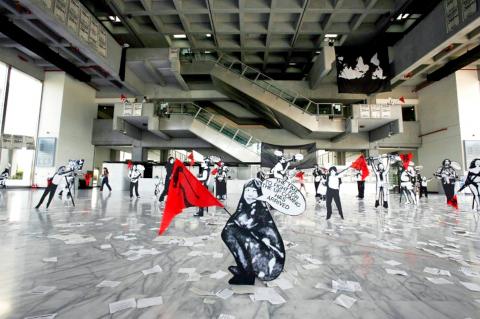
Photo courtesy of Internacional Errorista/ TFAM
Second Hand Emotion, currently on display at VT Art Salon, is a joint exhibition by Alexander Laner from Germany and the Berlin-based Danish artist Sofie Bird Moller. The title is derived from the lyrics of the 1984 Tina Turner song, What’s Love Got to do With It, alluding to the two-faced nature of love, how it can be exhilarating and spiteful. Both artists toy with the notion of aesthetic beauty, employing dark humor in their works. Laner, whose installations involve cars, grand pianos and big, clunky machine parts, considers himself a “sculptor.” In one piece, he builds his own kinetic cart from the engine of a motorcycle — you know, things that normal sculptors do. By contrast, Moller is known for tearing up and disfiguring the pages of fashion magazines and painting over them. She does this in an effort to force viewers to think that women are more than the sum of their sexuality.
■ VT Art Salon (非常廟藝文空間), B1, 47 Yitong St, Taipei City (台北市伊通街47號B1), tel: (02) 2516-1060. Open Tuesdays to Thursdays from 1:30pm to 9pm, and Fridays and Saturdays from 1:30pm to 10pm
■ Until Sept. 17
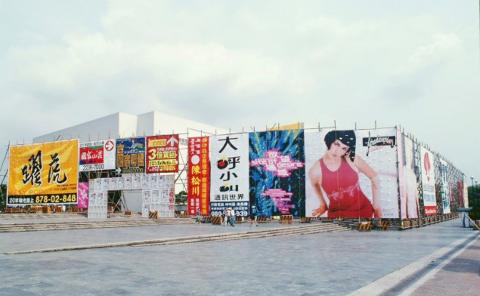
Photo courtesy of Cai Guoqiang/ TFAM
The works of American artist Carol Prusa are back at Taipei’s Bluerider Art. Infinite Cosmos: The Known and Unknown includes a selection of her well-known drawings of giant silver domes. Constructed with the painstaking precision of a mathematician, Prusa’s drawings take on a transcendent quality while at the same time showing us how the real world is created by geometric principles. Originally a chemistry major, Prusa switched to art and her work suggests that both artists and scientists are essentially dreamers.
■ Bluerider Art (藍騎士藝術空間), 9F, 25-1, Renai Rd Sec 4, Taipei City (台北市仁愛路四段25-1號9樓), tel: (02) 2752-2238. Open Tuesdays to Saturdays from 9am to 6pm
■ Until Oct. 1
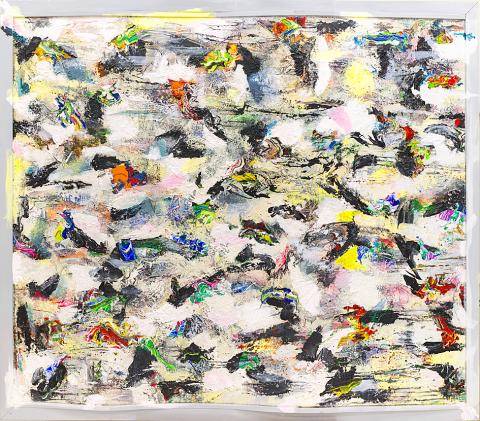
Photo courtesy of Suling Wang
Declaration/ Documentation: Taipei Biennial, 1996-2014 (朗誦/文件:台北雙年展1996-2014) documents all of the past Taipei biennials held at TFAM. This year’s biennial, which starts on Sept. 10, revolves around the theme of archives and memory, and is meant to be viewed in conjunction to this retrospective. Declaration/ Documentation also shows how contemporary art in Taiwan has evolved throughout the last two decades, particularly how it’s grown to be more global. It also serves to remind us the importance of remembering the past.
■ Taipei Fine Arts Museum (TFAM, 台北市立美術館), 181, Zhongshan N Rd Sec 3, Taipei (台北市中山北路三段181號), tel: (02) 2595-7656. Open Tuesdays to Sundays from 9:30am to 5:30pm and until 8:30pm on Saturdays
■ Until Feb. 5
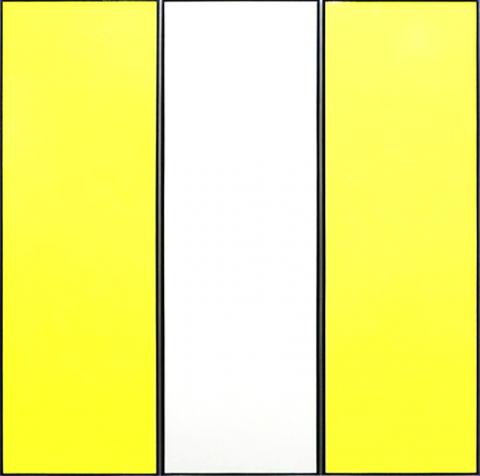
Photo courtesy of Galerie Grand Siecle
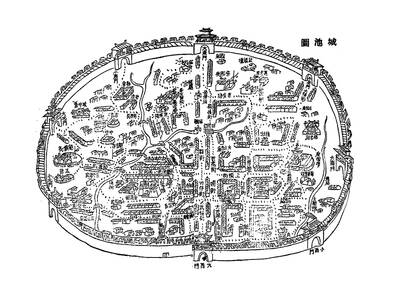
May 26 to June 1 When the Qing Dynasty first took control over many parts of Taiwan in 1684, it roughly continued the Kingdom of Tungning’s administrative borders (see below), setting up one prefecture and three counties. The actual area of control covered today’s Chiayi, Tainan and Kaohsiung. The administrative center was in Taiwan Prefecture, in today’s Tainan. But as Han settlement expanded and due to rebellions and other international incidents, the administrative units became more complex. By the time Taiwan became a province of the Qing in 1887, there were three prefectures, eleven counties, three subprefectures and one directly-administered prefecture, with

It’s an enormous dome of colorful glass, something between the Sistine Chapel and a Marc Chagall fresco. And yet, it’s just a subway station. Formosa Boulevard is the heart of Kaohsiung’s mass transit system. In metro terms, it’s modest: the only transfer station in a network with just two lines. But it’s a landmark nonetheless: a civic space that serves as much more than a point of transit. On a hot Sunday, the corridors and vast halls are filled with a market selling everything from second-hand clothes to toys and house decorations. It’s just one of the many events the station hosts,
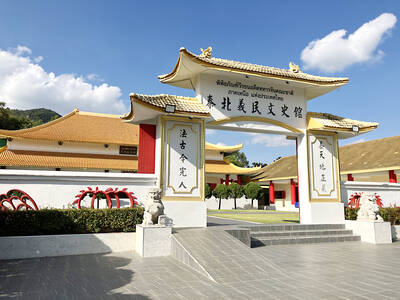
Among Thailand’s Chinese Nationalist Party (KMT) villages, a certain rivalry exists between Arunothai, the largest of these villages, and Mae Salong, which is currently the most prosperous. Historically, the rivalry stems from a split in KMT military factions in the early 1960s, which divided command and opium territories after Chiang Kai-shek (蔣介石) cut off open support in 1961 due to international pressure (see part two, “The KMT opium lords of the Golden Triangle,” on May 20). But today this rivalry manifests as a different kind of split, with Arunothai leading a pro-China faction and Mae Salong staunchly aligned to Taiwan.

Two moves show Taichung Mayor Lu Shiow-yen (盧秀燕) is gunning for Chinese Nationalist Party (KMT) party chair and the 2028 presidential election. Technically, these are not yet “officially” official, but by the rules of Taiwan politics, she is now on the dance floor. Earlier this month Lu confirmed in an interview in Japan’s Nikkei that she was considering running for KMT chair. This is not new news, but according to reports from her camp she previously was still considering the case for and against running. By choosing a respected, international news outlet, she declared it to the world. While the outside world